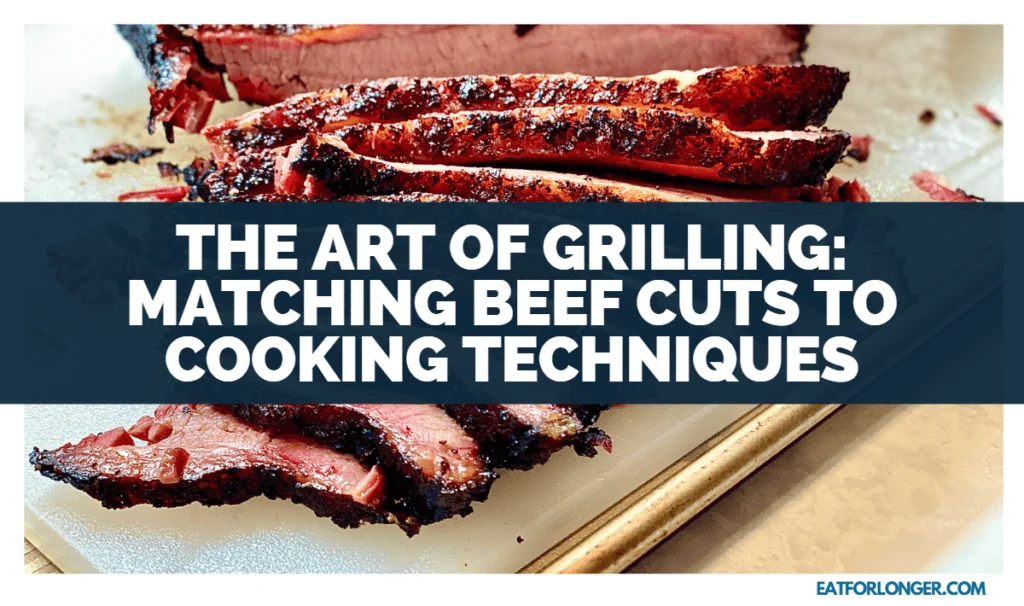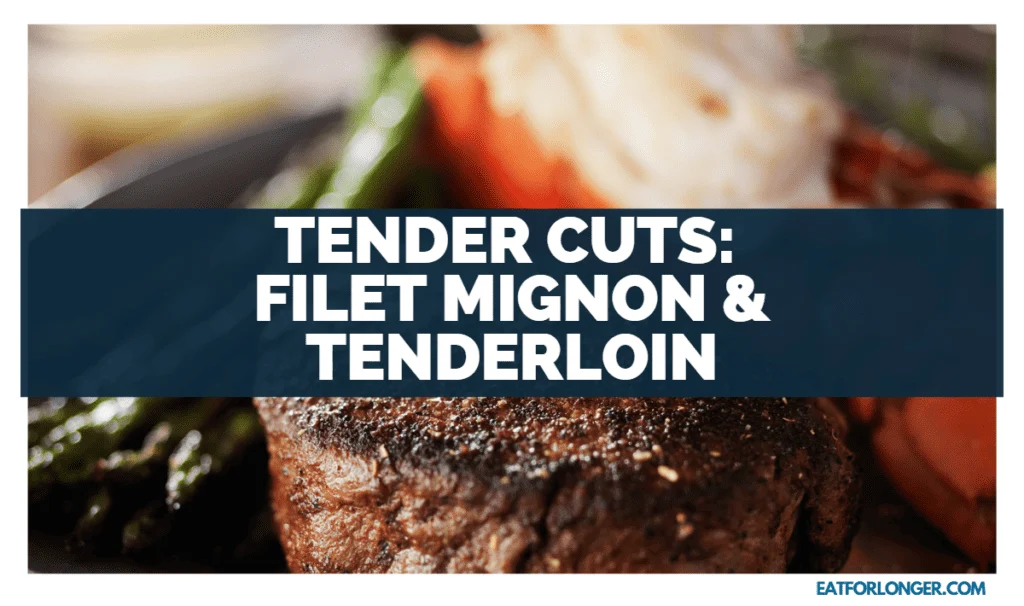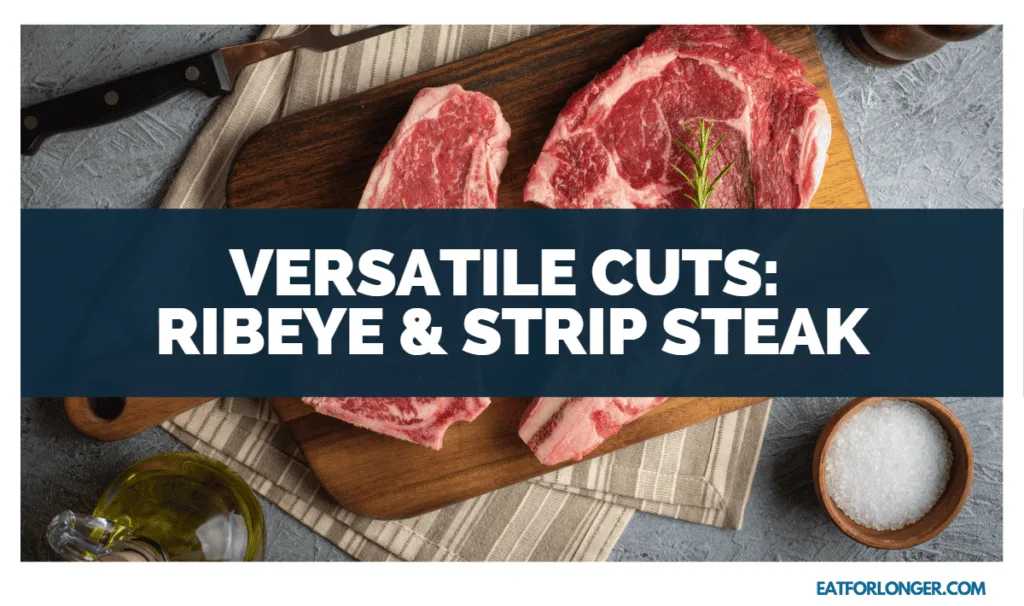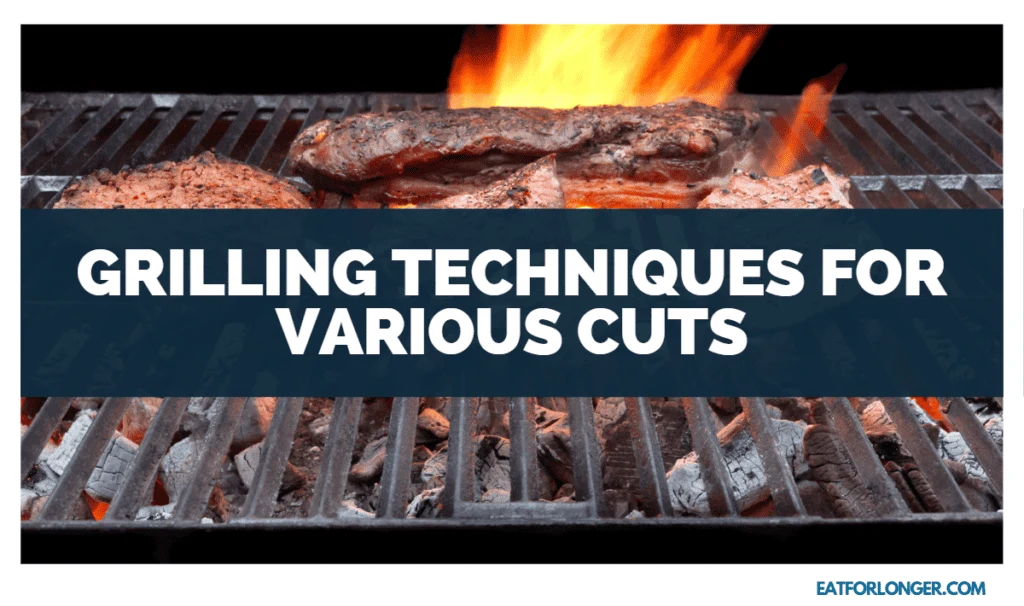
There’s something deeply satisfying about mastering the art of grilling, especially when selecting the perfect cut of Beef and pairing it with just the right cooking technique.
But with so many different cuts available, how do you know which is best suited for your desired dish?
Fear not, fellow grill enthusiasts;
I’m here to share my knowledge and experience matching beef cuts to their ideal cooking methods.
In this article, we’ll explore various cuts of Beef – from tender filet mignon and versatile ribeye steaks to slow-cooking brisket and short ribs – along with suitable grilling techniques that will bring out their unique flavors.
Check this out for my guide on choosing the best beef cuts for grilling.
I’ll also provide tips on achieving that drool-worthy steak you’ve been craving. So grab your tongs, fire up the grill, and dive into the mouthwatering world of grilled beef perfection!
Exploring Different Beef Cuts
Now that you’ve grasped the art of grilling let’s explore various beef cuts and how to cook them to perfection.
Beef marbling secrets are essential to mastering the grill since marbling refers to the fat content within the meat, which greatly affects tenderness and flavor.
Cut selection tips are handy for choosing the right cut of Beef for your desired cooking technique; options range from tender cuts like filet mignon or ribeye steaks to tougher cuts like chuck roast or brisket.
When selecting a cut of Beef, keep an eye out for good marbling throughout, as this will ensure rich and juicy results.
Tender cuts are perfect for quick grilling methods like direct heat or searing since their fine texture requires minimal cooking time.
On the other hand, tougher cuts benefit from slow-cooking techniques such as indirect heat or smoking; these methods allow ample time for collagen and connective tissue to break down, resulting in a more tender end product.
By understanding how different beef cuts react to specific cooking techniques, you’ll be well on your way to becoming a true grill master!
Tender Cuts: Filet Mignon and Tenderloin
Let’s dive into the world of tender cuts like filet mignon and tenderloin and see if they’re truly worth all the hype they get in culinary circles!
One thing that sets these two cuts apart from others is their unmatched tenderness.
Filet mignon is often considered the ‘king’ of steaks due to its luxurious texture and mild flavor.
At the same time, tenderloin is known for its versatility, as it can be sliced into small medallions or served as an impressive whole roast.
To make the most out of these exquisite cuts, I recommend trying the following:
- Pan-searing: This simple yet effective method will give your filet mignon a beautiful crust on the outside while preserving its delicate juiciness inside.
- To do this, sear each side on high heat for a few minutes before finishing it in an oven.
- Grilling: Tenderloin’s versatility shines when grilling – keep an eye on cooking times to prevent overcooking.
- A nice medium-rare temperature will guarantee optimum tenderness.
- Filet Mignon Pairings: Enhance this cut’s subtle flavors with complementary accompaniments such as garlic butter, blue cheese sauce, or a red wine reduction.
- Tenderloin Roast: For a show-stopping centerpiece at your next dinner party, try slow-roasting a whole beef tenderloin with herbs and seasonings until it reaches your desired level of doneness.
Armed with these tips and techniques, you’ll soon understand why filet mignon and tenderloin are held in such high regard by chefs worldwide!
Versatile Cuts: Ribeye and Strip Steak
Ready to explore the world of versatile cuts like ribeye and strip steak and discover how to make them shine in your kitchen?
These two popular steak cuts offer great flavor and texture but require finesse when grilling.
The ribeye is known for its juicy marbling, giving it a rich, buttery taste perfect for absorbing bold flavors from marinades.
Ribeye marinades can range from simple olive oil, garlic, and rosemary mixtures to more complex blends featuring soy sauce, balsamic vinegar, or coffee!
On the other hand, the strip steak has a slightly firmer texture with less marbling but still delivers an excellent beefy flavor.
Strip steaks are best when cooked with high-heat methods like grilling or broiling and are often served alongside classic pairings such as sautéed mushrooms or caramelized onions.
When grilling these versatile cuts, attention to temperature control and cooking times are important.
For ribeyes, I recommend searing over high heat for 2-3 minutes per side before moving them to a cooler part of the grill (or lowering the heat) until they reach your desired doneness – usually around 4-5 minutes per side for medium-rare.
This method ensures a beautiful crust on the outside while keeping the inside tender and juicy.
As for strip steaks benefit from being cooked at a consistently high heat throughout since they have less fat content than ribeyes; aim for about 4 minutes per side, depending on thickness, for medium-rare results.
Don’t forget those delicious Strip steak pairings – try topping your perfectly grilled steak with blue cheese crumbles or serving it alongside roasted garlic mashed potatoes for an indulgent meal you won’t soon forget!
Slow-Cooking Cuts: Brisket and Short Ribs
So you’re interested in mastering the art of slow-cooking cuts like brisket and short ribs, huh?
Let me tell you, with a little patience and some know-how; you’ll be serving up mouthwatering dishes that’ll have everyone coming back for seconds.
Slow-cooking these cuts is essential to break down their connective tissues and render their fat, resulting in tender, flavorful meat.
Brisket braising methods are an excellent way to achieve this succulence: by cooking the Beef low and slow in a flavorful liquid, you’ll end up with a dish so tender that it almost falls apart.
This method can also benefit short ribs; marinating them beforehand will further elevate their flavor profile.
Short rib marinades usually consist of acidic ingredients such as wine or vinegar that help break down the tough fibers in the meat while infusing it with robust flavors.
Various herbs and spices can be added to suit your taste buds – think bold flavors like garlic, rosemary, or thyme.
After marinating for at least 4 hours (or overnight if possible), sear your short ribs on high heat before transferring them to a Dutch oven or slow cooker for braising.
When it comes to brisket, choose a moist heat cooking method such as braising or smoking; both techniques will keep the meat juicy while breaking down those tough fibers over several hours.
When choosing your liquid for braising brisket, consider using beer or beef broth mixed with aromatic vegetables like onions and carrots – these additions will create a depth of flavor that’s hard to beat!
Remember that time is your best friend for achieving melt-in-your-mouth tenderness and unforgettable taste, no matter which cut you choose- brisket or short ribs.
Grilling Techniques for Various Cuts
You won’t believe the incredible flavors you can unlock by mastering various grilling methods for different cuts of meat!
Knowing your beef cuts and their interaction with different cooking techniques is essential, as not all meats are created equal.
Understanding which cooking method works best for each cut can elevate your grilling game and impress everyone at your next barbecue.
- Direct heat grilling: This technique is perfect for thinner cuts like steaks (ribeye, New York strip, or filet mignon), skewered meats, and hamburgers.
- Direct heat means the meat is cooked directly over the flames or hot coals.
- This method allows you to achieve a beautiful sear on the outside while locking in those delicious juices.
- Indirect heat grilling: Ideal for larger or tougher cuts like brisket, tri-tip, or beef ribs requiring longer cooking at lower temperatures.
- Indirect heat involves placing the meat away from direct flame and using a lid to trap in heat – essentially turning your grill into an oven!
- This slow-cooking process helps break down connective tissues and tenderize these more robust cuts.
- Combination of both methods: For cuts like T-bone steak or porterhouse steak, it’s beneficial to use direct and indirect heat grilling techniques during cooking.
- Start by searing the steak over high direct heat for a few minutes per side before moving it to an area with indirect heat, allowing it to cook through without burning while still retaining its juiciness.
By learning these different approaches to grilling various beef cuts, you can create sumptuous meals that showcase each cut’s unique flavor profile while ensuring perfectly cooked results every time!
Tips for Achieving the Perfect Steak
Are you aiming for that mouthwatering, juicy steak? Follow these tips and watch your masterpiece come to life on the grill!
One of the biggest searing secrets is to start with a hot grill.
Preheat your grill to high heat before placing the steak on it, as this will create a nice crust on the outside, locking in all those delicious juices.
Meat marination can also play a significant role in achieving that perfect taste; however, keeping things simple is best for steak.
A generous seasoning with salt and pepper just before grilling will do wonders.
Remember that different cuts of Beef require different cooking times and techniques.
Here’s a handy table to guide you through the process:
| Cut | Cooking Technique |
|---|---|
| Ribeye | Direct High Heat |
| Filet Mignon | Indirect Medium Heat |
| Strip Steak | Direct High Heat |
| T-Bone/Porterhouse | Direct High Heat |
| Skirt Steak | Direct High Heat |
Before grilling, let your steaks sit at room temperature for about 20-30 minutes – this helps them cook more evenly.
Once they’re done cooking, give them a few minutes (ideally around five) to rest before cutting into them or serving; this allows the juices to redistribute throughout the meat and keep it tender and juicy.
With these tips in mind, you’ll be well on your way to impressing friends and family with an unforgettable grilled steak experience!
In My Conclusion
In conclusion, mastering the art of grilling involves understanding the unique characteristics of different beef cuts and matching them with appropriate cooking techniques.
Tender cuts like filet mignon and tenderloin are perfect for quick, high-heat grilling, while versatile cuts like ribeye and strip steak offer a balance of tenderness and flavor.
Slow-cooking cuts like brisket and short ribs require patience and low, slow heat to achieve their full potential.
As the Beef It’s What’s For Dinner website suggests,
“Whether you’re looking for a lean cut for a weeknight family dinner or a large, tender cut for your holiday roast, our cut collections will provide you with everything you need to choose the perfect cut next time you’re at the meat case.”
And as Derrick Riches of The Spruce Eats advises,
“Flap steak can be mushy if you cook it rare, so plan to cook it medium-rare to medium. That will result in a tender steak that will be more enjoyable to chew.”
Here are some resources I recommend for further reading:
- carnivorestyle.com
- “Beef Cuts,” Beef It’s What’s For Dinner
- “Marinated Sirloin Flap Steak Recipe,” The Spruce Eats
For more insights like these, I invite you to sign up for our newsletter.
Together, let’s continue our journey toward perfecting the art of grilling the perfect cut of Beef!

I’m Chris Watson & the Founder of EatForLonger.com. I’m a food and wellbeing enthusiast researching and sharing foodstuffs and simple food-based concepts, such as fasting and clean eating.
I hope it inspires you to make tiny changes to what you eat and when you eat while optimizing your healthspan and all-around well-being.
Read more About Me here.





